Customer reviews are a must-have for the vast majority of ecommerce sites. Used well, they help shoppers to make an informed decision, and can drive sales.
In this article, we’ll look at how online retailers can attract reviews from customers, and how they can be used and presented on-site and elsewhere.
1. Email customers after purchase
It pays to proactively ask customers for reviews, and sending emails after purchase is a great way to do this.
As well as acquiring reviews to help other customers, you can gain useful feedback which can help you to improve your products.
Timing is important here. You’ll need to give customers enough time to have received the product and had a chance to use it, but it helps if the purchase is still relatively fresh in the customer’s mind.
For example, Waterstones has waited just over a month after delivery to ask me for reviews of books I’ve purchased.
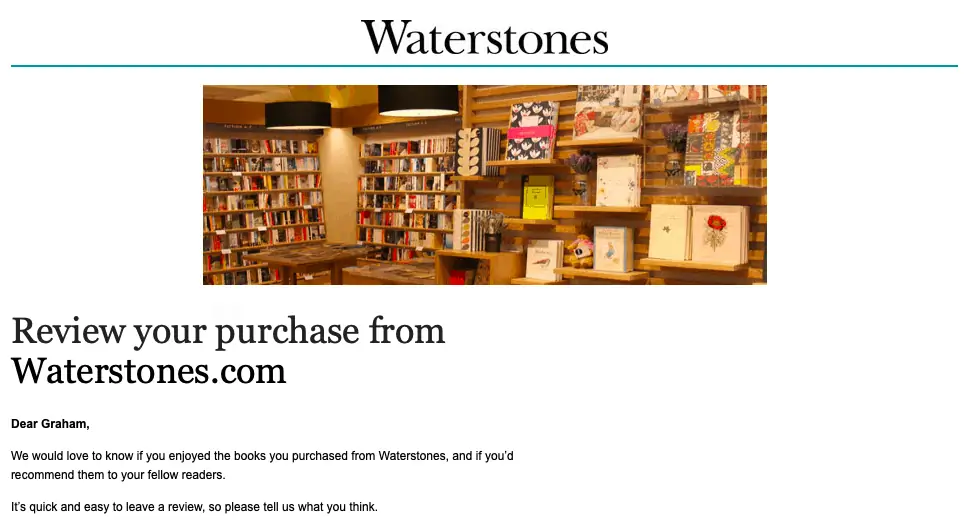
2. Incentivise reviews
If you need to gather reviews quickly, or perhaps not getting the response you’re looking for, then adding incentives such as discounts or vouchers can encourage more reviews.

It can work in other ways too. If I have a £5 voucher to use then I’m more likely to make another purchase.
3. Make reviews easy to leave
There’s a balance to strike between asking for lots of detail from customers, and deterring responses by making reviews hard work.
For example, you could ask for an overall review score, but make text boxes optional, so that customers can leave as much detail as they want to.
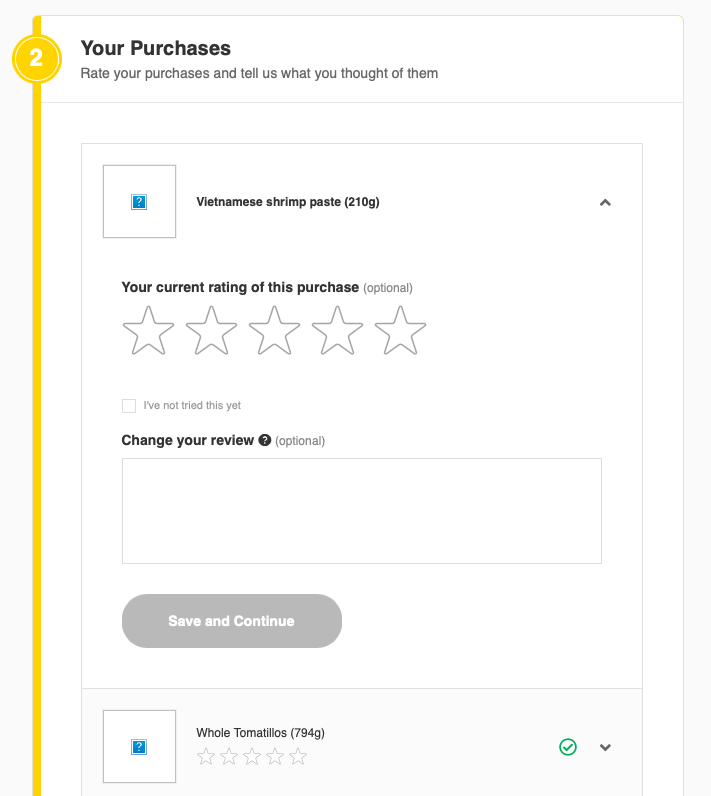
4. Use a reviews provider
If you’re prepared to pay, one way to generate customers reviews is to use a company like Bazaarvoice, Reevoo or Feefo to collect reviews.
They will take charge of collecting and formatting reviews for your product detail pages and elsewhere.
The advantage of this approach is that it can enable you to collect a good volume of authenticated reviews more quickly.
These can be reviews from your own customers, or reviews of product you sell syndicated from elsewhere.
5. Consider using reviews from verified buyers
Some retailers show reviews from buyers only, as a way of increasing customer trust in what they read.
There has been some controversy around fake reviews, and this can negatively impact customer trust. Verified reviews are one way to address this.

6. Publish good and bad reviews
It might be tempting to remove bad reviews, as they may impact sales, but it can be counter productive.
Lots of positive reviews can seem to be too good to be true, so the occasional negative comment adds credibility. It also means that customers will be confident that their comment will actually be published if they take the time to write a review.

Negative reviews can help in a number of ways:
- They can help customers to understand the biggest downfalls of the product they’re considering.
- Shoppers can identify any features that might not work for them.
- They provide a balance to give an all round picture of the product.
- Some peoples’ negatives are other shoppers’ positives. For example, a camera with complex features is a plus for some shoppers, while others prefer simplicity of use.
- If people buy with an understanding of the positive and negative features of products, they’re less likely to return them later.
7. The information which shoppers look for from reviews
According to Statista, customers are mostly looking for information on product performance, product quality, and user satisfaction from product reviews.
For this reason, it can be a good idea to highlight key aspects of reviews like durability, battery life, performance etc.
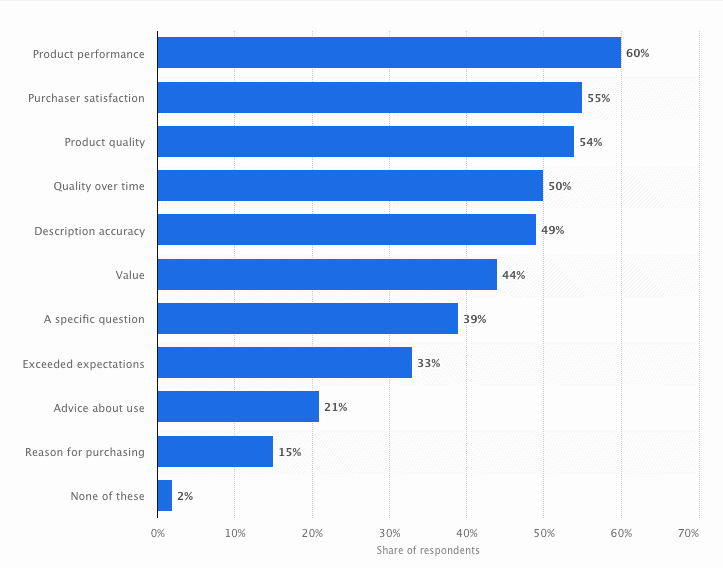
8. Present review score summaries
The review score summary may be the only pat of the review that shoppers consult. It can be enough to form a view and provide reassurance.
For this reason, retailers will often show the review score prominently on product pages, under the product name.
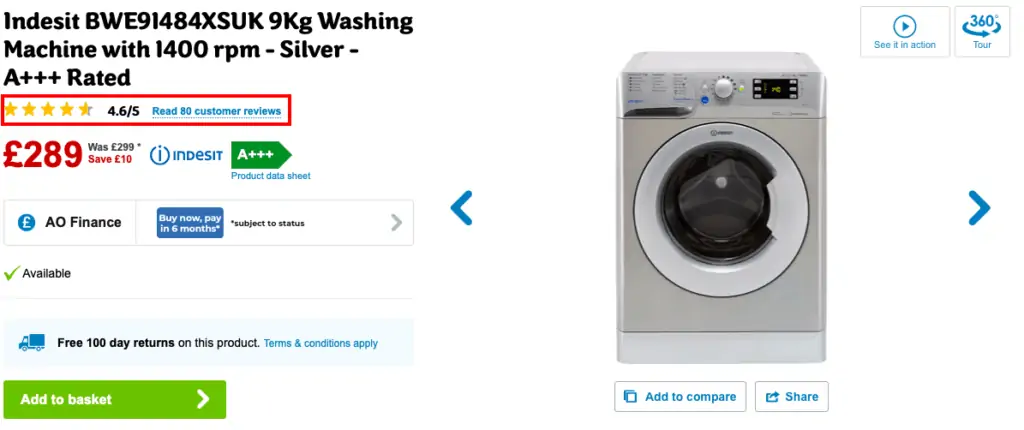
The average review score and the number of reviews are key pieces of information, and a link to the reviews themselves allows customers to dig into the detail if they want to. 9. 9. Show detailed review information
For many products, it’s good to dive into the detail so that customers can see if a product
10. Present a summary of stats to help customers decide
Beyond the average review score, presentation of stats around reviews can help shoppers to make faster judgments about products.
So here, Home Depot has review scores organised by the numbers of positive and negative reviews, and picks ut scores for quality, features, ease of use etc.

11. Ordering of reviews
Reviews can be ordered according to most recent, but another way to do this is by the most useful reviews – a question many sites ask is ‘did this review help?’.
This allows them to present the most useful first and helps customers to access useful information more quickly.
12. Make large numbers of reviews easy to use
One problem can be the sheer number of reviews sites collect. It’s important to have a certain number of reviews to make the ratings credible, but once sites attract more than a handful, they need to be able to organise them.
Once a product page has more than a handful of reviews, just showing them in a list makes them harder for shoppers to make sense of. For this reason, sites find ways to sort reviews and pick out key details to customers can see key information quickly.
For example, this food processor on Amazon has more than 3,000 reviews, so Amazon summarises scores by feature, shows the distribution of positive and negative scores, and picks out key phrases so that customers can skip to those that seem to address their concerns about the product.
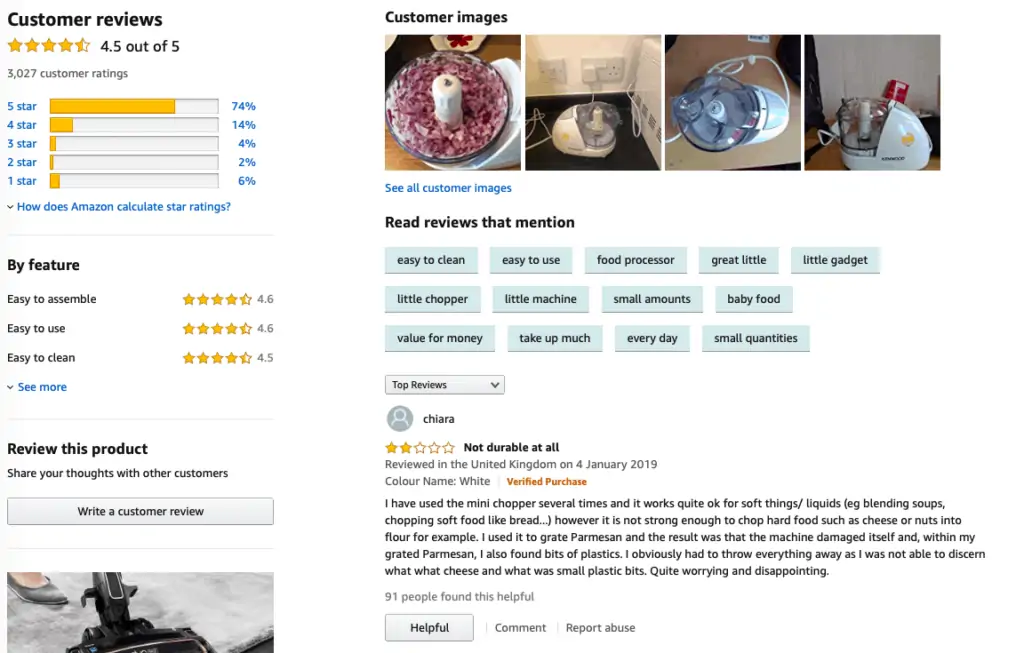
Home Depot has another feature useful feature, which allows shoppers to filter reviews. For example, this allows them to see reviews from people from similar age groups or live of expertise.

13. Use reviews as a filter on
If review scores are a key consideration for shoppers, then showing them earlier in the shopping process helps them with product selection.

It narrows their choice by excluding products with lower ratings, speeding up the process of product selection and providing reassurance that the items they’re viewing are all good quality.
14. Add reviews to key landing pages
Using reviews on landing pages for PPC, or any other campaign adds useful information for shoppers, and can help persuade them to buy.
For landing pages showing multiple products, it can also pay to push the products with the best review scores more prominently.
15. Use reviews in email marketing
If you’re sending emails recommending products, then including user reviews adds an extra level of persuasion.
They can work well in cart abandonment emails for example. These shoppers were already close to a purchase, and showing positive reviews can be enough to tip the balance.
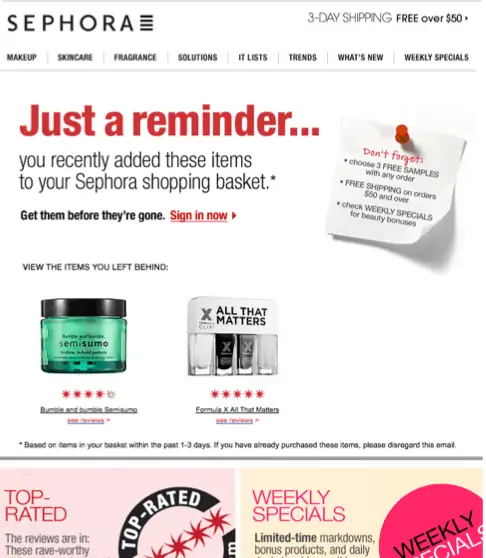
16. Use reviews in offline campaigns
If reviews can be effective online, then it can pay to use them in other contexts where they can also influence customers.
For example, brands like Kia have used them in TV campaigns in the past, others have used them on billboards and print advertising.
One good use is in store, at point of sale, as in this example from Best Buy.
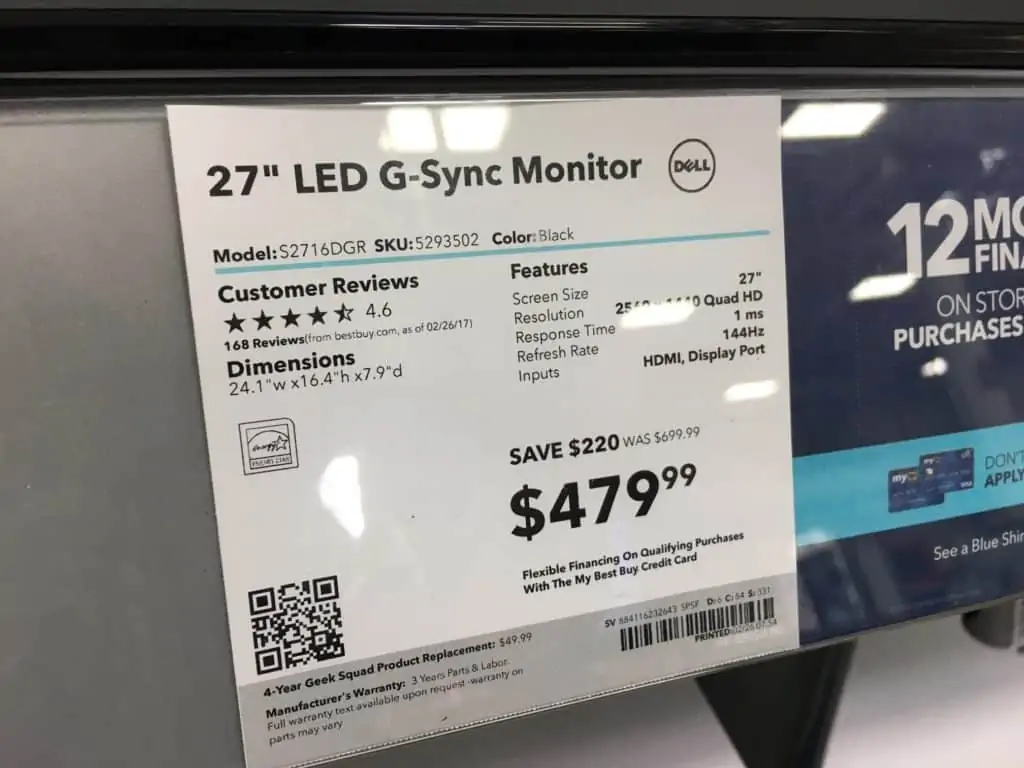
If a customer is thinking go buying a product, then a positive review score here can work just as it would on a product page.
17. Show reviews of service and delivery
Customer’s aren’t just looking for product reviews, they also want to know about quality of service, speed of delivery and general retailer performance.
For this, stores can use services like Google Customer Reviews, Feefo, Trustpilot and others to gather and display feedback from customers.
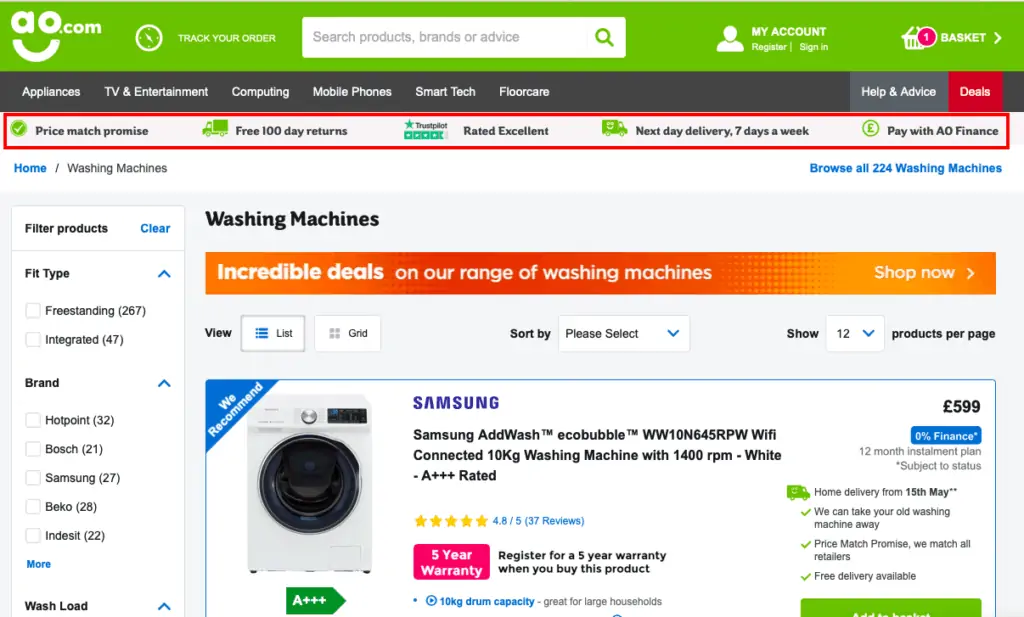
This can be shown around the site, such as key landing pages, homepages, or during checkout for reassurance. For example, AO.com uses its USP bar to show its ‘excellent’ Trustpilot rating.
